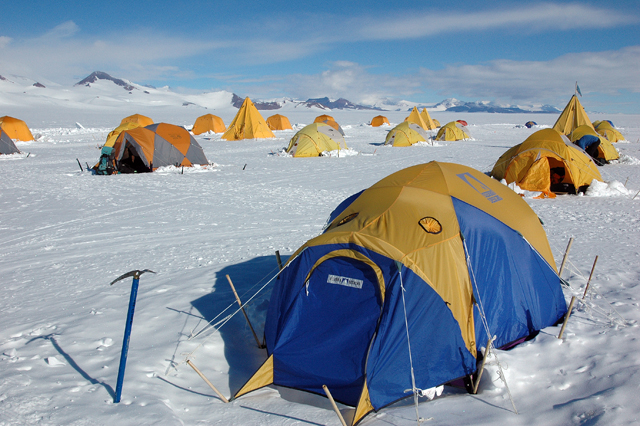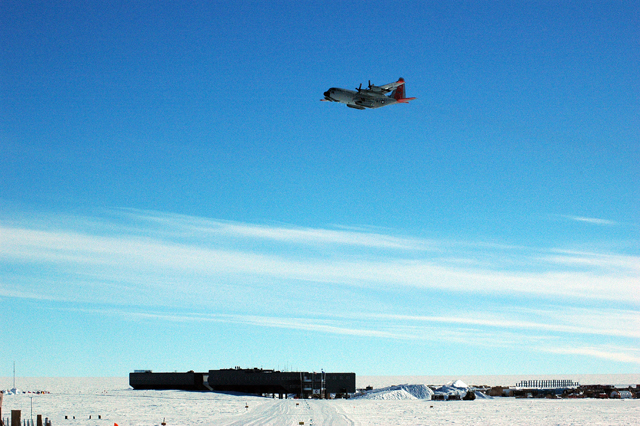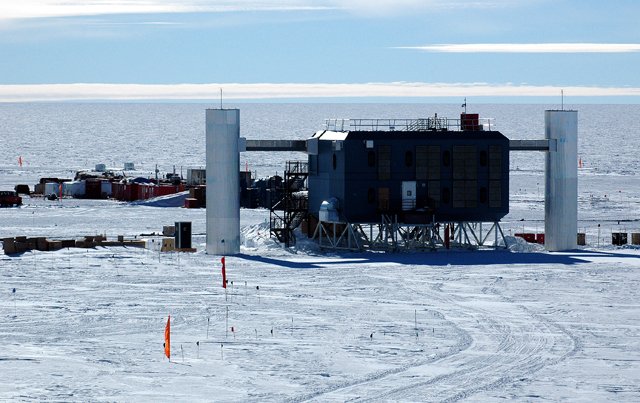End of seasonLast plane of 2010-11 summer field season leaves McMurdoPosted March 7, 2011
One of the busiest field seasons in recent memory for the U.S. Antarctic Program That’s the day the last plane, an Australian Airbus A319, departed with 33 passengers, leaving about 150 people to winter-over at the USAP’s largest research station, which boasted more than 1,100 people at the height of the summer field season. The number of people working away from the station was particularly impressive this year: the field camp population peaked at 333 at 36 locations around the continent in late December 2010, the largest USAP field population in more than 10 years. (Above, tents arrayed at the Central Transantarctic Mountains field camp.) The program also achieved some major milestones this season. The IceCube Neutrino Observatory South Pole Station went into hibernation on Feb. 15, with 49 people spending the long, dark winter. Sunset will be on March 23, when the six-month night begins. Palmer Station The U.S. military, under the Joint Task Force Support Forces Antarctica, continued its support during the 2010-2011 season. The LC-130 aircrews from the New York Air National Guard's Additionally, U.S. Air Force C-17 aircrews from the 62nd and 446th Airlift Wings at Joint Base Lewis-McChord
|



For USAP Participants |
For The Public |
For Researchers and EducatorsContact UsU.S. National Science FoundationOffice of Polar Programs Geosciences Directorate 2415 Eisenhower Avenue, Suite W7100 Alexandria, VA 22314 Sign up for the NSF Office of Polar Programs newsletter and events. Feedback Form |




